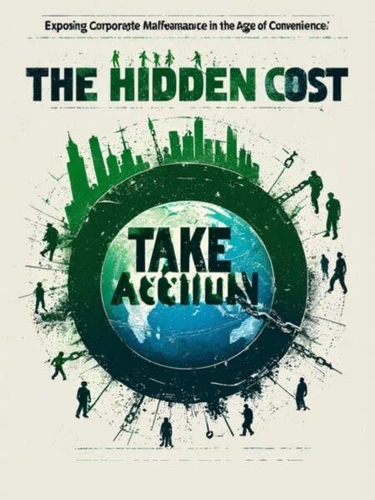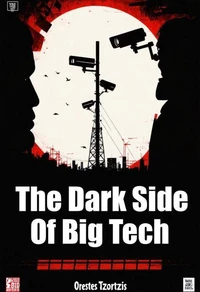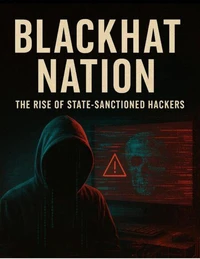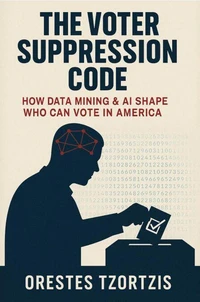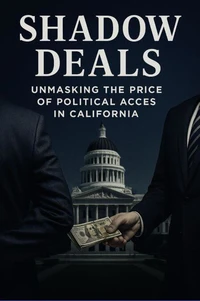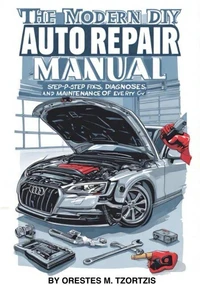Nouveauté
The Hidden Cost
Par :Formats :
Disponible dans votre compte client Decitre ou Furet du Nord dès validation de votre commande. Le format ePub est :
- Compatible avec une lecture sur My Vivlio (smartphone, tablette, ordinateur)
- Compatible avec une lecture sur liseuses Vivlio
- Pour les liseuses autres que Vivlio, vous devez utiliser le logiciel Adobe Digital Edition. Non compatible avec la lecture sur les liseuses Kindle, Remarkable et Sony
 , qui est-ce ?
, qui est-ce ?Notre partenaire de plateforme de lecture numérique où vous retrouverez l'ensemble de vos ebooks gratuitement
Pour en savoir plus sur nos ebooks, consultez notre aide en ligne ici
- FormatePub
- ISBN8231847273
- EAN9798231847273
- Date de parution23/08/2025
- Protection num.pas de protection
- Infos supplémentairesepub
- ÉditeurWalzone Press
Résumé
This book is a relentless exposé and a roadmap for change. It follows the supply chain of fast fashion from glossy storefronts to toxic dye rivers, from boardroom spreadsheets to overworked factory floors, revealing how corporate malfeasance is engineered, laundered, and normalized. Through vivid storytelling, data-driven analysis, and on-the-ground perspectives, it uncovers the hidden mechanics of environmental violations, labor exploitation, and financial sleights of hand that power "cheap" clothing-and the broader corporate playbook behind it. Across five chapters, the narrative moves from the sparkly surface of convenience culture to the gritty engines behind it.
Chapter One introduces the problem: a system built for speed, opacity, and denial. It explains how fast fashion perfected the art of externalizing costs-dumping waste into rivers, squeezing suppliers into impossible margins, and using global jurisdictions to make accountability optional. Chapter Two takes readers to the production heartlands, where the human and ecological toll is paid. It traces how demand volatility and price pressure cascade into coerced overtime, wage theft, unsafe conditions, and environmental degradation-while local communities shoulder the burden. Chapter Three unpacks the financial and legal architecture that lets it all happen.
It outlines how subcontracting layers, shell entities, and selective reporting keep brands insulated, and how "compliance theater" manufactures plausible deniability. It shows how glossy sustainability campaigns, carbon offsets, and ESG metrics can be deployed as reputational armor, often masking business-as-usual practices. Chapter Four follows the money and the media-mapping the influence networks that shape narratives, lobby lawmakers, and blunt regulatory teeth.
It explores the tactics used to discredit whistleblowers, fragment worker power, and turn consumers into unwitting accomplices through marketing churn and artificial scarcity. The final chapter offers a pragmatic yet ambitious blueprint for change. It identifies leverage points across the chain-from procurement contracts and living-wage enforcement to wastewater transparency and independent auditing.
It provides tools for consumers, investors, advocacy groups, and policymakers to demand verifiable proof over promises. The book closes by reframing value itself: asking what clothing is truly worth if its price is subsidized by poisoned rivers, exhausted bodies, and silenced communities. What makes this book different is its dual lens. It treats malfeasance not as isolated scandals but as symptoms of incentive structures built into global commerce-and it grounds every analysis in choices people can act on.
Readers will come away with a clear understanding of how fast fashion's speed and scale are inseparable from its harms, how similar dynamics recur across industries, and how targeted reforms can disrupt the cycle. The story is urgent, but it is not hopeless. It shows that opacity is the strategy of impunity-and that transparency, enforcement, and collective action are the antidotes. This is a book for anyone who has ever asked, "How can a shirt cost less than a sandwich?" and wanted the full, honest answer.
It peels back the sheen of affordability to expose the ledger of costs we've been trained not to see-and it arms readers with the insight to demand a market where people and planet are not the cheapest line items.
Chapter One introduces the problem: a system built for speed, opacity, and denial. It explains how fast fashion perfected the art of externalizing costs-dumping waste into rivers, squeezing suppliers into impossible margins, and using global jurisdictions to make accountability optional. Chapter Two takes readers to the production heartlands, where the human and ecological toll is paid. It traces how demand volatility and price pressure cascade into coerced overtime, wage theft, unsafe conditions, and environmental degradation-while local communities shoulder the burden. Chapter Three unpacks the financial and legal architecture that lets it all happen.
It outlines how subcontracting layers, shell entities, and selective reporting keep brands insulated, and how "compliance theater" manufactures plausible deniability. It shows how glossy sustainability campaigns, carbon offsets, and ESG metrics can be deployed as reputational armor, often masking business-as-usual practices. Chapter Four follows the money and the media-mapping the influence networks that shape narratives, lobby lawmakers, and blunt regulatory teeth.
It explores the tactics used to discredit whistleblowers, fragment worker power, and turn consumers into unwitting accomplices through marketing churn and artificial scarcity. The final chapter offers a pragmatic yet ambitious blueprint for change. It identifies leverage points across the chain-from procurement contracts and living-wage enforcement to wastewater transparency and independent auditing.
It provides tools for consumers, investors, advocacy groups, and policymakers to demand verifiable proof over promises. The book closes by reframing value itself: asking what clothing is truly worth if its price is subsidized by poisoned rivers, exhausted bodies, and silenced communities. What makes this book different is its dual lens. It treats malfeasance not as isolated scandals but as symptoms of incentive structures built into global commerce-and it grounds every analysis in choices people can act on.
Readers will come away with a clear understanding of how fast fashion's speed and scale are inseparable from its harms, how similar dynamics recur across industries, and how targeted reforms can disrupt the cycle. The story is urgent, but it is not hopeless. It shows that opacity is the strategy of impunity-and that transparency, enforcement, and collective action are the antidotes. This is a book for anyone who has ever asked, "How can a shirt cost less than a sandwich?" and wanted the full, honest answer.
It peels back the sheen of affordability to expose the ledger of costs we've been trained not to see-and it arms readers with the insight to demand a market where people and planet are not the cheapest line items.
This book is a relentless exposé and a roadmap for change. It follows the supply chain of fast fashion from glossy storefronts to toxic dye rivers, from boardroom spreadsheets to overworked factory floors, revealing how corporate malfeasance is engineered, laundered, and normalized. Through vivid storytelling, data-driven analysis, and on-the-ground perspectives, it uncovers the hidden mechanics of environmental violations, labor exploitation, and financial sleights of hand that power "cheap" clothing-and the broader corporate playbook behind it. Across five chapters, the narrative moves from the sparkly surface of convenience culture to the gritty engines behind it.
Chapter One introduces the problem: a system built for speed, opacity, and denial. It explains how fast fashion perfected the art of externalizing costs-dumping waste into rivers, squeezing suppliers into impossible margins, and using global jurisdictions to make accountability optional. Chapter Two takes readers to the production heartlands, where the human and ecological toll is paid. It traces how demand volatility and price pressure cascade into coerced overtime, wage theft, unsafe conditions, and environmental degradation-while local communities shoulder the burden. Chapter Three unpacks the financial and legal architecture that lets it all happen.
It outlines how subcontracting layers, shell entities, and selective reporting keep brands insulated, and how "compliance theater" manufactures plausible deniability. It shows how glossy sustainability campaigns, carbon offsets, and ESG metrics can be deployed as reputational armor, often masking business-as-usual practices. Chapter Four follows the money and the media-mapping the influence networks that shape narratives, lobby lawmakers, and blunt regulatory teeth.
It explores the tactics used to discredit whistleblowers, fragment worker power, and turn consumers into unwitting accomplices through marketing churn and artificial scarcity. The final chapter offers a pragmatic yet ambitious blueprint for change. It identifies leverage points across the chain-from procurement contracts and living-wage enforcement to wastewater transparency and independent auditing.
It provides tools for consumers, investors, advocacy groups, and policymakers to demand verifiable proof over promises. The book closes by reframing value itself: asking what clothing is truly worth if its price is subsidized by poisoned rivers, exhausted bodies, and silenced communities. What makes this book different is its dual lens. It treats malfeasance not as isolated scandals but as symptoms of incentive structures built into global commerce-and it grounds every analysis in choices people can act on.
Readers will come away with a clear understanding of how fast fashion's speed and scale are inseparable from its harms, how similar dynamics recur across industries, and how targeted reforms can disrupt the cycle. The story is urgent, but it is not hopeless. It shows that opacity is the strategy of impunity-and that transparency, enforcement, and collective action are the antidotes. This is a book for anyone who has ever asked, "How can a shirt cost less than a sandwich?" and wanted the full, honest answer.
It peels back the sheen of affordability to expose the ledger of costs we've been trained not to see-and it arms readers with the insight to demand a market where people and planet are not the cheapest line items.
Chapter One introduces the problem: a system built for speed, opacity, and denial. It explains how fast fashion perfected the art of externalizing costs-dumping waste into rivers, squeezing suppliers into impossible margins, and using global jurisdictions to make accountability optional. Chapter Two takes readers to the production heartlands, where the human and ecological toll is paid. It traces how demand volatility and price pressure cascade into coerced overtime, wage theft, unsafe conditions, and environmental degradation-while local communities shoulder the burden. Chapter Three unpacks the financial and legal architecture that lets it all happen.
It outlines how subcontracting layers, shell entities, and selective reporting keep brands insulated, and how "compliance theater" manufactures plausible deniability. It shows how glossy sustainability campaigns, carbon offsets, and ESG metrics can be deployed as reputational armor, often masking business-as-usual practices. Chapter Four follows the money and the media-mapping the influence networks that shape narratives, lobby lawmakers, and blunt regulatory teeth.
It explores the tactics used to discredit whistleblowers, fragment worker power, and turn consumers into unwitting accomplices through marketing churn and artificial scarcity. The final chapter offers a pragmatic yet ambitious blueprint for change. It identifies leverage points across the chain-from procurement contracts and living-wage enforcement to wastewater transparency and independent auditing.
It provides tools for consumers, investors, advocacy groups, and policymakers to demand verifiable proof over promises. The book closes by reframing value itself: asking what clothing is truly worth if its price is subsidized by poisoned rivers, exhausted bodies, and silenced communities. What makes this book different is its dual lens. It treats malfeasance not as isolated scandals but as symptoms of incentive structures built into global commerce-and it grounds every analysis in choices people can act on.
Readers will come away with a clear understanding of how fast fashion's speed and scale are inseparable from its harms, how similar dynamics recur across industries, and how targeted reforms can disrupt the cycle. The story is urgent, but it is not hopeless. It shows that opacity is the strategy of impunity-and that transparency, enforcement, and collective action are the antidotes. This is a book for anyone who has ever asked, "How can a shirt cost less than a sandwich?" and wanted the full, honest answer.
It peels back the sheen of affordability to expose the ledger of costs we've been trained not to see-and it arms readers with the insight to demand a market where people and planet are not the cheapest line items.

